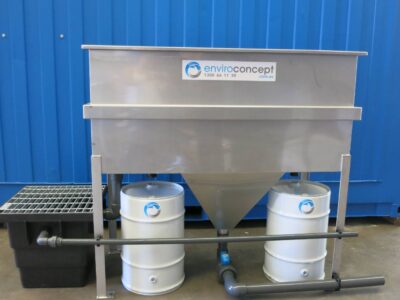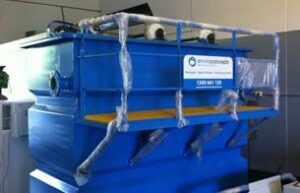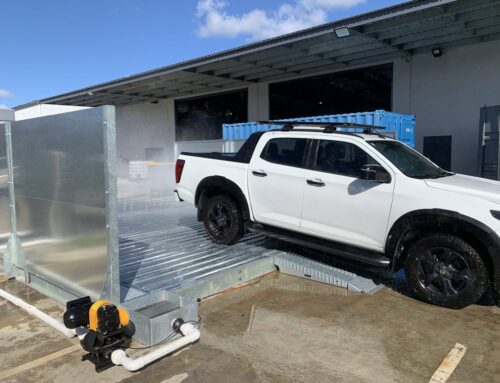Is your wash bay system struggling to handle oil, sludge, and grit without constant clogs, clean-ups, and compliance concerns? You’re not alone. According to industry data, over 70% of operations in Australia face avoidable downtime due to poor wash bay design and inadequate wastewater systems. Don’t let the case of generic solutions hinder your operations. Discover custom portable wash bays for any industry made right here in Australia.
Why Oil, Sludge & Grit Are the Biggest Enemies of Your Wash Bay
From heavy-duty mining fleets to commercial car wash setups, all vehicle wash operations face a common trio of challenges: oil, sludge, and grit. While often overlooked, these contaminants in wastewater cause:
- Reduced performance in water treatment systems
- Increased maintenance costs due to blockages
- Overflow risks in holding tanks
- The case of fines for non-compliance with local authority regulations
Poor handling of this waste stream can lead to legal liability, reputational harm, and even environmental damage, particularly for sites near water tables or local residents. This is especially true in unroofed wash bays where rain ingress can exacerbate overflow and contamination risks.
Grit Traps 101: The Simple Fix That Prevents Costly Downtime
Grit and silt are the silent killers of efficient wash water flow. Left unchecked, they accumulate in pipes, clog pumps, and settle in water recycling systems—causing avoidable shutdowns.
A well-installed grit trap or silt trap:
- Captures sediment before it enters the main treatment stream
- Prevents damage to mechanical parts
- Extends the life of oil water separators and other downstream components
Operations using a portable wash bay system benefit most from modular grit trap systems that can be relocated as sites change. These traps are a low-cost, high-impact solution that should be part of every wash bay floor design.
Oil-Water Separators Explained: Keep Your System Running Clean

No wash bay setup is complete without a high-performing oil water separator. Whether you’re washing mining equipment or servicing transport fleets, hydrocarbon-contaminated wash water or wastewater must go through pre treatment using oil water separators to meet industry and local authority trade waste discharge criteria.
These separators function by slowing the flow of wastewater or wash water in wash bays, allowing lighter oil to rise while heavier particulates sink. Clean water is then discharged or sent to holding tanks for reuse.
Custom-built systems from manufacturers based in Australia ensure compliance with even the strictest state regulations, including those involving AQIS and environmental management plans. More importantly, they are engineered for local conditions—avoiding the delays and risks of overseas-supplied alternatives.
Say Goodbye to Oily Sludge: Proven Ways to Stay Compliant
Oily sludge is more than a messy byproduct—it’s a compliance risk. It clogs pipes, shortens equipment lifespan, and can lead to breaches in trade waste permits. So how do high-performing operations manage it?
- Automated sludge dewatering systems reduce manual handling
- Flush diversion systems direct heavy contamination away from core recycling units
- Holding tanks equipped with level sensors prevent overflow and support scheduling for pump-outs
Water recycling systems with robust sludge separation capabilities not only ensure the case of environmental compliance for wash bays but dramatically reduce costs associated with waste transport and wastewater or wash water treatment.
Block the Buildup: Easy Upgrades That Save You Cleanup Time
You don’t need a full redesign to improve the performance of wash bays. Sometimes, minor upgrades can make a major difference.
- Non-slip polyurethane coatings on wash bay floors reduce the accumulation of grime
- Modular bunding controls surface runoff and keeps solids contained
- Removable sediment screens reduce downtime during clean-outs
These simple changes help reduce labour hours, improve safety, and keep your equipment or vehicle wash operations running more efficiently.
Expert Tips for Keeping Your Wash Bay Waste Under Control
Every operation is different, but the following expert-approved practices apply in any industry, from mining to transport and automotive sectors:
- Design for volume: Ensure your system matches your daily wash water output
- Keep your pre treatment units accessible for routine maintenance
- Select a wash bay design that allows easy drainage and safe containment
- Regularly monitor water quality to prevent degradation of recycling systems
- Train staff on wash down best practices and emergency containment procedures
Wash bays that are built with operational input, rather than retrofitted, consistently outperform off-the-shelf setups.
The Maintenance Hack That Keeps Grit Traps from Failing
A well-maintained silt trap is your best defense against downstream failures in wash bays. Yet many fail not due to bad design—but due to inconsistent equipment maintenance routines.
The simplest solution? Schedule clean-outs based on actual sediment levels. Get smart sensors, now available in many quality product lines, that can detect fill levels and alert your team in real time.
Pairing this with a site-specific maintenance calendar ensures:
- Minimal unscheduled downtime
- Consistent water flow across your treatment systems
- Extended equipment lifespan, especially in the case of portable wash bay setups in high-use sites
Eco-Smart Disposal: How to Keep Your Wash Bay Green
Australian regulations are tightening, and clients are increasingly prioritizing sustainable practices. A green wash bay isn’t just a nice-to-have—it’s a strategic advantage.
- Incorporate rainwater harvesting systems to reduce potable water use
- Use biodegradable cleaning agents that won’t harm water treatment systems
- Contact and partner with local contractors for eco-certified sludge and oil waste disposal
Efficient and compliant wash bays reassure clients, protects local residents, and minimizes environmental impact—all while cutting operational costs.
Inside the Machines: Top Tech That Powers Clean Wash Bays

Modern wash bays rely on integrated technology to handle the dirtiest loads. Here’s a closer look at the systems making a difference:
- Reverse osmosis units for polishing recycled water to near-potable standards
- Clarifiers that use gravity and chemical flocculation for high-volume sites
- Oil water separators with coalescing plate packs for maximum hydrocarbon capture
- Flush diversion systems with auto-sensing switches for waste segregation
- Smart controllers for regulating discharge based on tank levels and water quality
These technologies aren’t just add-ons. They are fundamental to the operational success of industrial wash bays across Australia.
Avoid These Wash Bay Design Fails That Cost You Big
Design missteps are among the most expensive errors in wash bay implementation. Here’s what to watch for:
- Poor drainage gradients that lead to pooling and slip hazards
- Oversized wash bays that waste space and water, especially in unroofed wash setups
- Incorrect bunding that fails to contain spills, breaching EPA guidelines
- Lack of integration with water recycling systems, leading to excessive consumption
- Ignoring the realities of heavy vehicle use, resulting in early structural failure
Working with an experienced local supplier who understands your industry ensures your design meets both operational and regulatory needs. Get in touch with our team for custom portable wash bays tailored to your needs.
Frequently Asked Questions
How do I know if my wash bay is compliant with local regulations?
Contact and work with suppliers who offer full documentation and local authority compliance reports, including site-specific discharge limits.
Can I install a wash bay in a remote site without sewer access?
Yes, a portable wash bay system is designed for off-grid operations using holding tanks and integrated water recycling systems.
What type of maintenance do oil water separators need?
Routine inspections, oil layer measurements, and sludge disposal schedules are critical. Some systems include alarms and auto shut-off for added protection.
Are water recycling systems suitable for high-grit sites like mining?
Absolutely. Systems with pre treatment grit traps, clarifiers, and reverse osmosis units are designed for heavy loads and abrasive solids.
What’s the lead time on Australian-made systems?
Typically much shorter than overseas alternatives—often under 6 weeks depending on the configuration.
How to Get Started: 3 Simple Steps
- Request a Site Assessment
Contact our team at EnviroConcepts. We evaluate your operations, runoff risk, and local compliance needs. - Design Your Custom System
Our engineers tailor a portable wash bay system to your site, equipment, water volume, or any specific case. - Install & Stay Supported
Rapid delivery, full documentation, and ongoing support from a local team.
Ready to Clean Up Your Wash Bay?
Is your operation still relying on generic solutions that don’t meet the demands of your equipment, environment, or compliance requirements? Get in touch with us today.
At EnviroConcepts, we build more than just portable wash bays—we deliver peace of mind. Our portable wash bay solutions, flush diversion systems, silt traps, oil water separators, and complete water treatment systems are trusted by hundreds of operators across mining, automotive, equipment hire, and transport industries.
Let’s design a portable wash bay system that works as hard as your fleet does. Contact our team for a custom quote, or explore our wide range of modular, scalable, and Australian-made wash bays today.




